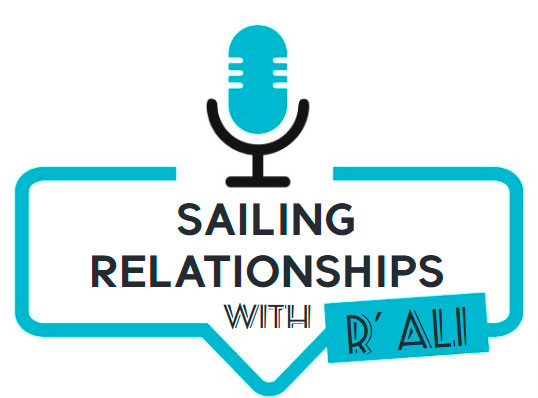“Jeffrey and I have been raising our family and working together for over two decades. My family is Ashkenazi Hungarian and his is Egyptian. Our home is the best mix of both Ashkenaz and Sephardic customs and food. We run a home health care company that we built together.”
~~ Agnes ~~
Ellen Geller Kamaras
Please meet Agnes Shemia.
Agnes exudes positive energy, warmth, and an upbeat perspective. She is definitely a people person.
Agnes describes herself as giving, hardworking, diligent, and relentless. Agnes is both driven and is committed to her family, business, and community.
Agnes was born in Hungary and moved to New York with her parents, Susan and Leslie Gollender, at the tender age of one. Her grandparents were Holocaust survivors. Agnes speaks fluent Hungarian. She is very close with her brother, Alen, who is five years younger and lives in New Jersey.
Growing up in Mill Basin, Brooklyn, Agnes attended Shulamith Elementary school until sixth grade. She then transferred to Yeshiva of Flatbush and studied there through high school.
“I was shy as an adolescent and became less so as I got older. By the time I graduated college I was a total extrovert.”
Agnes greatly enjoyed her Judaic and Hebrew classes and preferred science to math and history. Languages came easy to her, and she was an above average student. Agnes was very social, however, and admits to chatting a lot in class.
After high school, Agnes studied at New York University and majored in speech-language pathology (SLP). Why speech? “I always loved medicine, and I thought I could be a great teacher. SLP seemed like a great combination of the two.”
Family
Agnes was introduced to her naseeb, Jeffrey Shemia, of Egyptian descent, through her high school friend, Debbie. The couple have been married for twenty-six years and combined forces to create a family and build successful home health care companies operating in New York, Florida, and Missouri.
Their children are Victor (25), Esther (22), Jacob (18), and Sophie (16). Victor attended NYU Stern School of business and is working in the family health care business. Esther is studying nursing at NYU and is married to Samuel Krost, who is like a son to the Shemias. Jacob is starting his sophomore year at NYU and Sophie is a junior at Ramaz High School.
Agnes and Jeffrey raised their children in Brooklyn and spent summers in Deal. Their office is in Brooklyn. As they started their family, the Shemias moved to Mill Basin to be close to Agnes’ parents. “My career would not have flourished if not for my parents. They helped us with our kids tremendously.”
With their youngest in school in Manhattan, Agnes and Jeffrey are planning a move from Brooklyn to the Upper East Side.
Their Journey
As a newlywed, Agnes completed her master’s degree in SLP at Lehman College. She has always preferred working with adults. Her patients were primarily stroke victims or had traumatic brain injuries.
It was Jeffrey’s idea and dream to build a home health care company. An avid newspaper reader, he recognized in his early twenties that the aging baby boomers would need and desire home health care. The U.S. Department of Health and Human Services cited that by 2050 those over age 85 are projected to more than triple, and an estimated 70 percent of older adults reaching age 65 are expected to require, in their lifetime, some type of long-term care assistance, such as help with bathing, dressing, meal preparation, medication management, housekeeping, and transportation.
Jeffrey worked in Agnes’ father diamond business and Agnes practiced SLP at outpatient rehabilitation centers. They worked hard to build up savings to realize their dream. A few short years after graduation, Agnes and Jeffrey built their home health care business one patient at a time.
After many failed and challenging attempts, the Shemias were licensed by the NYS Department of Health. They opened their first home health care business, HCS Home Care, in 2004, providing non-skilled services. In 2017, they expanded their scope and purchased Girling, which includes a range of skilled services, nursing, SLP, physical therapy and occupational therapy.
Approximately a year ago, HCS-Girling entered into a strategic partnership with Pinnacle, one of the largest private Medicare certified providers of skilled home health and extended care services in Florida.
Passions
On a personal level, Agnes is most proud of her children and family.
Professionally, she is thrilled with the business she and Jeffrey created. Agnes loves the purposeful work that she does.
She is impassioned about health care and truly enjoys helping people.
“Unfortunately, there will always be a need for home health care. Fortunately, with the advances in technology, we have been able to take care of so many patients, their caregivers, and families.”
Agnes’s biggest challenge is finding the right people to take care of the patients. She is always looking for new opportunities and new creative and smart talent.
During the pandemic the Shemias went to their office daily. If their staff was required to work and be there for their clients, then they were there, too.
Agnes explained how HCS-Girling is different than other agencies – it’s about their adherence to compliance with government regulations and also her accessibility. “I can be reached on the phone and help a family find the right caregiver. I genuinely care. I am aware and appreciative that my secret to success is Hashem.”
Balance
“I am obsessed with my children. I don’t want to miss out on being a mom, a wife, a daughter, a sister, a hostess, and a community member. I do what needs to get done. I love to cook and entertain. Chicken soup for Shabbat and cholent parties are a must. Juggling business and family is challenging but greatly rewarding.”
Agnes is grateful that she and Jeffrey have very similar values, and they are on the same page regarding parenting. “We work a lot, talk shop a lot, and our kids grew up in the business. Both my daughters want to have careers.”
The Shemias appeared on a Propel panel called Couples Who Work. Watching the interview, one could see the love and effort they both gave and continue to contribute to their children and the business.
Agnes is happy that she was able to practice SLP for several years and has grown in her time management skills, organization skills, and as a clinical director and administrator of HCS-Girling. “I don’t work less but I work with more intention.”
Jeffrey is proud of how he and Agnes partner on both fronts, at work and at home, and he confesses that achieving work-life balance is not easy and requires a lot of effort.
Community is essential to Agnes. She is involved with SBH, Propel, various mikvehs, and helping Chabad houses all over the world. She does not say no when organizations reach out to her.
Agnes acknowledged that she is not so good at relaxing, but she does enjoy cooking and she loves music.
Tips for Young Adults
Don’t give up and don’t take yourself too seriously. Do what you love, and it won’t feel like work. Stay humble especially when you are successful – it’s not only because of you.
You can connect with Agnes at Ashemia@hcshomecare.com. Please check out her Instagram pages @HCS Home Care, @Girling Healthcare, @Extended Home Care and @Pinnacle Home Care.
Ellen Geller Kamaras, CPA/MBA, is an International Coach Federation (ICF) Associate Certified Coach. Her coaching specialties include life, career, and dating coaching. Ellen can be contacted at ellen@lifecoachellen.com.












